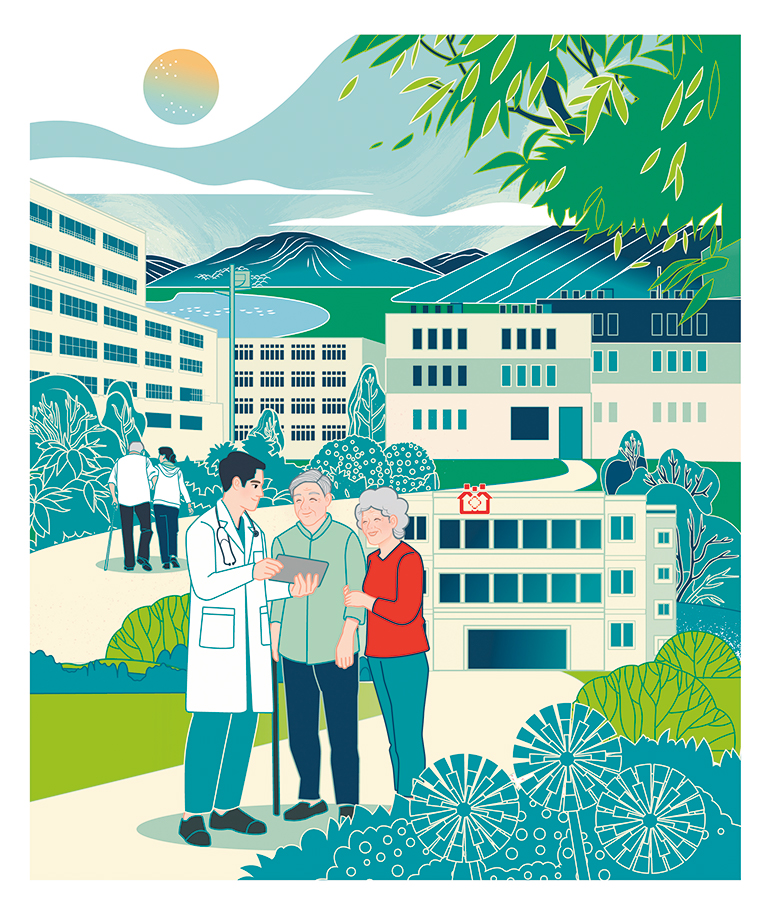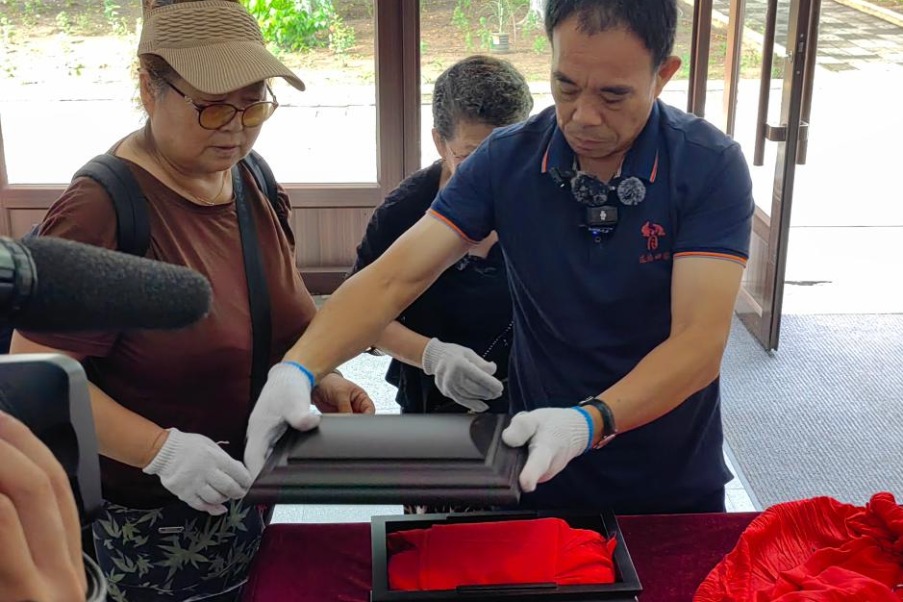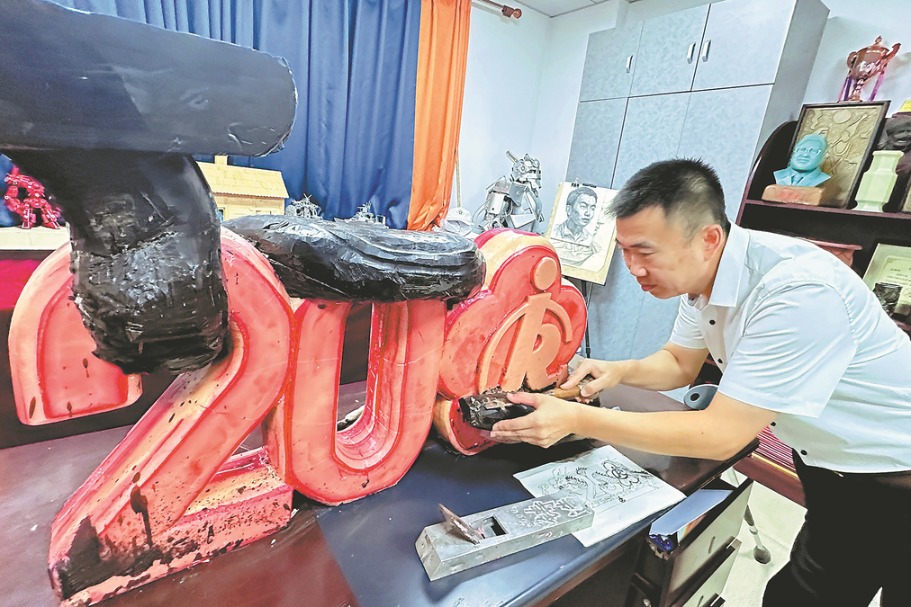Grassroots healthcare gets a boost
Policy aims to improve service quality of clinics, hospitals in rural areas


Health authorities in China plan to increase the number of community hospitals and rural clinics, bolster the quality of their services and improve the training of medical personnel in rural areas, according to a policy document released this year.
Grassroots healthcare facilities, including community hospitals and healthcare centers, township medical facilities and village clinics, have played an indispensable role in meeting the medical demands of the public and safeguarding their health, the National Health Commission said in a statement explaining the document, which was released in late January.
To help the facilities improve their capabilities and address shortcomings, health authorities have put forth several evaluation standards that each contain a two-tier evaluation system for such facilities.
In the document jointly released by the commission, the National Administration of Traditional Chinese Medicine and the National Disease Control and Prevention Administration, authorities highlighted the need to increase the proportion of facilities meeting the standards.
By 2025, at least 20 percent of township health facilities and community health centers in areas with populations of more than 10,000 should meet the high-tier standard, while those in less populated areas should strive to boost their capabilities. In addition, at least 500 new community hospitals should be established each year, the document said.
Each provincial-level region should see their proportion of village clinics meeting low-tier, basic standards rise to at least 40 percent.
According to the commission, the proportion of China's rural clinics and community health centers that met basic standards reached 68 percent by the end of 2022, and there were more than 3,800 community hospitals across the nation.
"The document has been released to further improve disease prevention and treatment capabilities and the health management capabilities of grassroots medical facilities, and to improve the satisfaction of patients seeking medical services at such facilities," the commission said.
Rural clinics key
One significant approach to improving healthcare in rural areas is building village-level central clinics that are capable of piloting rural healthcare advancements, according to the document.
Such clinics will be set up in peripheral areas of counties in eastern and central parts of China. Each should contain at least 50 hospital beds, or one-tenth of the beds seen in county-level hospitals.
"Efforts should be made to enhance their infrastructure, talent cultivation, and emergency and clinical care," the document said.
In Yangzhou, Jiangsu province, 18 central rural clinics have been set up in recent years, said local health official Sheng Jun during an interview with Health Times, a newspaper administered by the commission.
"Such facilities' functions tend to fall between that of county-level hospitals and that of village clinics," he said. "In the past, local residents were concerned about the quality of medical treatment at village clinics that were closer to their homes, while also finding making a trip to major hospitals located in county seats troublesome and time-consuming.
"Rural central clinics have helped address the predicament. Compared to regular clinics in the countryside, they are more advanced in terms of bed arrangements, medical equipment and the capabilities of their doctors and nurses," he said.
In Southwest China's Chongqing, a central clinic in Bashan township of Zhongxian county sits near where four neighboring counties meet and serves about 300,000 residents.
Chen Shijian, head of the clinic, said more than 100 patients with kidney failure in Bashan and neighboring villages used to spend three to four hours on the road traveling to the county hospital in urban Zhongxian to receive dialysis treatment.
"We have cooperated with the county hospital to set up a dialysis room here to offer convenient services for them and help save their time and expenses," he said. "It is estimated that each patient can save nearly 6,000 yuan ($829) on transportation expenses annually."
The policy document also calls for improving grassroots healthcare, mainly in the fields of emergency care, contagious disease response and pediatric illnesses.
Chen said that the central clinic's pediatric department has enlisted assistance from an expert panel dispatched by the county hospital.
"These experts have guided and trained 11 local pediatricians so far," he said.
In one case, Chen said that an infant diagnosed with an upper respiratory infection experienced repeated fevers despite therapeutic interventions. Thanks to guidance from county-level experts, the baby was later diagnosed with mononucleosis, an infection caused by a herpes virus, and was soon discharged after treatment plans were adjusted.
Chen added that his clinic has also established direct transfer channels with the county hospital. During a peak of respiratory infections among children in December, three patients who were experiencing severe symptoms were promptly sent there for further treatment.
The policy document also requires each major clinic or community healthcare center to be equipped with at least one ambulance and be added to regional emergency medical care systems.
Major facilities should also strive to set up their own fever clinics and quarantine areas.
"It is important to boost general practitioners' basic knowledge of pediatrics and seasonal infectious diseases," the document said.
Sharpening skills
Another key step in efforts to ramp up grassroots healthcare is improving the training of grassroots healthcare personnel, according to the document.
It said that a wide range of physicians, including those specializing in internal medicine, gynecology, dentistry, traditional Chinese medicine and mental health, should be available at community or township medical centers.
"It is also necessary to strengthen the training of physicians at grassroots facilities and step up the training of personnel specializing in the fields of TCM, nursing, pharmacy and rehabilitation," it said, adding that programs that send grassroots workers to higher-level hospitals should also be rolled out regularly.
Xu Xiaochan, an emergency care doctor at the Acupuncture Hospital of the Anhui University of Traditional Chinese Medicine in Hefei, Anhui province, said that a raft of local and national measures in recent years has played a role in resolving a shortage of grassroots medical personnel.
Xu, who is also a deputy to the National People's Congress, China's top legislature, said one common misunderstanding is that grassroots doctors only need to deal with common and simple diseases such as headaches and fever.
"But in reality, they also receive patients with different and complicated diseases and handle various types of patients, from the elderly and children to pregnant women. In addition, they are often tasked with carrying out public health services, physical examinations and health awareness campaigns," she said.
Xu said that nurturing general practitioners is a significant step toward strengthening grassroots healthcare.
"They should be capable of delivering swift diagnoses and care while identifying a wide range of diseases and ascertaining how to triage and transfer patients," she said.
The doctor added that partnerships with general medicine departments at large hospitals and grassroots medical facilities should be strengthened.
"Grassroots doctors can improve themselves and learn more advanced skills at larger hospitals, while medical professionals at those hospitals can also be sent to less-developed areas to share their management skills and help make local services more precise," she said.
wangxiaoyu@chinadaily.com.cn
- American musician: the Silk Road influenced American music
- China upgrades Ragasa to super typhoon
- Over 5,000 photographers showcase work in Shanxi's ancient city of Pingyao
- Li calls on US lawmakers to enhance exchanges, ties
- Luxury brands drop ads featuring S. Korean actress after she insults China
- Jiangmen activates Chikungunya fever L3 emergency response




































